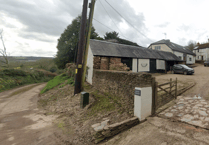LAST week’s closure of Hinkley Point B after 46 years was described by anti-nuclear campaign group Stop Hinkley as ‘the end of an error’.
Stop Hinkley spokesman Roy Pumfrey said Monday (August 1) was not a day to celebrate the life of Hinkley Point B.
He said Monday was a day to mourn the production of radioactive waste that would need to be carefully and expensively managed and monitored for many generations to come.
Mr Pumfrey said: “Some of these timescales for managing the legacy of waste left over by Hinkley B are truly staggering. EDF’s jamboree on Monday conveniently ignores the nuclear waste which has been generated over the past 46 years.
“Under current plans it will be at least another 100 years before all this dangerous waste is under the ground.
“And the costs are staggering, too.
“EDF’s most recent £23.5 billion estimate for decommissioning advanced gas-cooled reactors (AGRs) suggests it could cost around £3-4 billion to decommission Hinkley B.
“The taxpayer has been asked to top up the decommissioning fund by over £10 billion.
“Past experience suggests these costs will continue rising.”
Mr Pumfrey said the UK was left with Hinkley’s legacy of nuclear waste for thousands of years and even after 46 years, nobody yet knew for sure what would happen to it other than a ‘vague promise’ to bury it in a geological disposal facility – a site for which had still not been found.
He said EDF’s first task was now to agree a safety case with the Office for Nuclear Regulation (ONR), for fuel handling and de-fueling, which could take about three months.
Then, around 300 fuel channels in each of the station’s two reactors would have to be emptied and the spent fuel transferred to a cooling pond where it would remain for at least 90 days.
Once cooled, the spent fuel would be transferred to a transport flask and taken by lorry more than 10 miles along country roads to a railway siding next to the main line at Bridgwater Station and loaded on to a train about 100 yards from a junior school.
Mr Pumfrey said there could be three to four journeys a week during the next three-and-a half-years, as about 350 spent fuel flasks would have to be taken to a storage facility in Sellafield, Cumbria, by 2026.
If all went to plan, ownership of the site would pass to the Nuclear Decommissioning Authority (NDA) which would take five to six years to prepare the reactors for a period of care and maintenance.
Final dismantling was not expected to begin until about 2070, said Mr Pumfrey.





Comments
This article has no comments yet. Be the first to leave a comment.